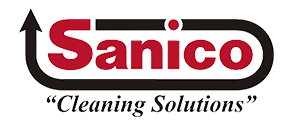Guidance for Businesses to Plan and Respond to Coronavirus (COVID-19)
Guidance for Businesses to Plan and Respond to Coronavirus (COVID-19)
This article relies heavily on information provided by the CDC regarding the COVID-19 coronavirus and what is known about other coronaviruses. This strain is still very new and we can only use the information we have and what the CDC and WHO are learning as time goes on. We are providing this information as a general guide and are not attempting to provide medical support. As always your best source for medical advice is a qualified physician and contacting the CDC or local health department directly.
What are coronaviruses?
Coronaviruses are a large family of viruses that are common in humans and many different species of animals, including camels, cattle, cats, and bats. Rarely, animal coronaviruses can infect people and then spread between people, such as with MERS-CoV and SARS-CoV. The virus that causes COVID-19 is spreading from person-to-person in China and some limited person-to-person transmission has been reported in countries outside China, including the United States. However, respiratory illnesses like seasonal influenza, are currently widespread in many US communities.
Strategies your maintenance and infection control staff should employ now:
- Encourage proper hand hygiene procedures and cough/sneeze etiquette:
- Place hand hygiene posters at the entrance of your facility and in restrooms and breakrooms. Make sure entrances and common areas are equipped with an alcohol based (60-95%) Hand Sanitizer and that all restrooms and breakrooms have ample supply of handsoap.
- Instruct employees to clean their hands often. Employees should wash their hands with soap and water for at least 20 seconds when a sink is available, after using the lavatory, and whenever hands are visibly dirty.
- Place cough and sneeze etiquette posters at the entrance of your facility and in areas they are likely to be seen.
- Perform routine environmental cleaning:
- Routinely clean all frequently touched surfaces in the workplace, such as workstations, countertops, and doorknobs. Use the cleaning agents that are usually used in these areas and follow the directions on the label. Be vigilant and clean as often as possible and to the best of your abilities.
- The CDC states that “No additional disinfection beyond routine cleaning is recommended at this time.”, however using a disinfecting spray, disinfecting wipe, or disinfectant cleaner with a coronavirus kill claim ensures that you are mounting your best defense against the coronaviruses we know about so far, and hopefully COVID-19 as well.
- Provide disposable wipes so that commonly used surfaces (for example, doorknobs, keyboards, remote controls, desks) can be wiped down by employees at each use.
- Encourage sick employees to stay home:
- When they have symptoms of acute respiratory illness and have a fever of 100.4° F or greater using an oral thermometer, or have signs of a fever and any other symptoms. If fever has subsided for greater than 24 hours without the use of fever reducers they may no longer be contagious. Consult your local health department to be sure.
- Ensure that your sick leave policies are flexible and consistent with public health guidance and that employees are aware of these policies. Doctor’s notes may be difficult or impossible for employees to obtain due to overburdened health care facilities. Also if symptoms aren’t severe enough to warrant medical attention, employees choosing to stay home may slow the spread of the disease.
- Separate sick employees:
- CDC recommends that employees who appear to have acute respiratory illness symptoms (i.e. cough, shortness of breath) upon arrival to work or become sick during the day should be separated from other employees and be sent home immediately. Sick employees should cover their noses and mouths with a tissue when coughing or sneezing (or an elbow or shoulder if no tissue is available).
Additional Considerations:
- Advise employees before traveling to take certain steps:
- Check the CDC’s Traveler’s Health Notices for the latest guidance and recommendations for each country to which you will travel. Specific travel information for travelers going to and returning from China, and information for aircrew, can be found at on the CDC website.
- Advise employees to check themselves for symptoms of acute respiratory illness before starting travel and notify their supervisor and stay home if they are sick.
- Ensure employees who become sick while traveling or on temporary assignment understand that they should notify their supervisor and should promptly call a healthcare provider for advice if needed.
- If outside the United States, sick employees should follow your company’s policy for obtaining medical care or contact a healthcare provider or overseas medical assistance company to assist them with finding an appropriate healthcare provider in that country. A U.S. consular officer can help locate healthcare services. However, U.S. embassies, consulates, and military facilities do not have the legal authority, capability, and resources to evacuate or give medicines, vaccines, or medical care to private U.S. citizens overseas.
For more information see the CDC Guidance: https://www.cdc.gov/coronavirus/2019-ncov/specific-groups/guidance-business-response.html

